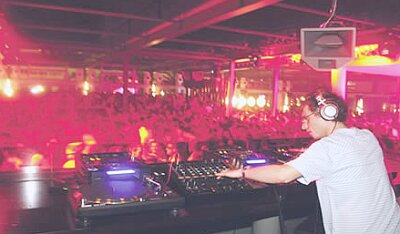About how to write music …
 Have you ever thought about the fact that classical and electronic music have a lot in common? After all, classical music is considered the most convenient material for processing by many world-renowned producers, and many musicians have switched to electronic sound, having received before that a conservatory or jazz education. It’s all about the main canons of creating works that, in classical and electronic music, are very similar. DJ Anton Aprelin, the owner of classical music education and experience in writing his own orchestration, numerous songs and arrangements, as well as tracks in progressive style, shared his views on the birth of electronic works.
Have you ever thought about the fact that classical and electronic music have a lot in common? After all, classical music is considered the most convenient material for processing by many world-renowned producers, and many musicians have switched to electronic sound, having received before that a conservatory or jazz education. It’s all about the main canons of creating works that, in classical and electronic music, are very similar. DJ Anton Aprelin, the owner of classical music education and experience in writing his own orchestration, numerous songs and arrangements, as well as tracks in progressive style, shared his views on the birth of electronic works.
The vertical of the track in electronic music is very similar to the vertical of the orchestration, there are always 6 functions that are typical for the classics: melody, counterpoint, harmony, figure, bass and percussion, all of which manifest themselves only at key points of the piece. The only difference is in the number of possible timbre colors – computer music gives the author much more opportunity – by controlling the synthesizer knobs, you can get an infinite number of new timbres.
Training
So, electronic music is characterized by the so-called “quadratic structure” (and, not only to it, just here it manifests itself most vividly) – all elements must be multiples of 4 or at least used an even number of times, and the key moments should fall on every fourth beat or the phrase. The quadratic structure is especially clearly seen in the introduction, when, to make mixing easier, usually there is only a rhythm, to which new and new drums are gradually added every four or eight beats, but it must be maintained throughout the track. This phenomenon is somehow connected with the internal rhythms of a person, because it is not by chance that 4/4 is the most common size in music as a whole.
As for the choice of the program in which the music is written, then it doesn’t depend so much on it as on the choice of the microphone for vocal recording. Much more important is the professionalism of the producer and vocalist, as well as their habits. Anton, for example, chooses Logic and Neumann microphones, and sometimes the simpler 58th SHURE. The use of live instruments in the track, according to many professionals, in our time has become unnecessary due to the highest quality of virtual counterparts.
Build:
As a rule, the track is born as follows: melody – harmony – rhythm – bass. Interestingly, the processes of creating music in different styles are often similar: the same sketches, “sketches” of the main themes in the head, or occurring under the fingers while picking up the strings on the guitar or the keys of the “piano” midi keyboard. The melody is gradually processed, it acquires a more slender appearance, it becomes more harmonious by ear, and one day suddenly there comes an understanding that something will come of it. And then more laborious work follows – arrangement, selection of sounds, instruments – each drum separately, “brushes”, Noise effects, counterpoints, arpeggiated figurations, and so on and so forth. Inspiration can come at any time, in a very different setting. By the way, counterpoint is a term that may not be familiar to people without music education; this is, as it were, a second tune, not similar in character to the main theme and harmoniously complementing it.
The classical scheme of the instrumental track:
Rhythm. Naked quadratic rhythm at the beginning of the track should go for about a minute. Not less – so that the information was not problematic, and no more, so as not to delay the wait by the public. In house tracks throughout the whole work the same rhythm is traditionally maintained, only drums (drum, snare, percussion, shakers) can change.
Introduction. Plot with a simplified sound. Lack of noise atmospheric effects, cut of low frequencies.
Main theme. An even number of times can be repeated for the reason given above — the law of quadraticity.
Lull Lack of percussion, perhaps with a muted main theme.
Development. With increasing volume and noise.
The main party. See above.
The final barrel. About a minute of simple rhythm, for ease of mixing the next track, with a decrease in the number of drums.
It should be noted that this construction is not the only possible and can vary greatly. The vocal compositions have a slightly different scheme due to the structure of the couplet-chorus. And you shouldn’t delay the introduction much, otherwise the main theme of the track will come too late and, accordingly, will end sooner than the public has time to thoroughly test it.
Timbre and effects:
After selecting the instrument, a considerable amount of time is taken by the search for its timbre. At the same time, throughout the composition, the color of the sound may change (processing with different effects, mixing the duplicate, i.e. playing the instrument in unison or octave of the instrument). When, for example, a bass timbre is selected, its sound is carefully processed by the equalizer (processing that makes the timbre louder, more muffled).




